I regularly share a document from my OneDrive (e.g., an unfinished blog post to get a review). And like most users, I share my content with Edit permissions… Not always a good idea!
Indeed, by default in OneDrive, any user with Edit permissions can in turn (re)share it to other people, who can in turn re-share it to a third person… The spread of data can become uncontrollable.
The OneDrive owner may be faced with a fait accompli and not know the reasons behind a sharing link when reviewing permissions (if there is a review…).
In order to limit endless sharing chains, OneDrive offers several settings. In my experience, these features are not used enough, even though they are simple. This is the same problem I mentioned for SharePoint, but the remediation possibilities are slightly different.
Prevent guests to (re)share item they don’t own
The first thing to do is to prevent external users (SharePoint or Azure AD B2B guests) from (re)sharing content they don’t own.
This setting is done in the SharePoint admin center and covers all SharePoint sites and OneDrive.
By default, guests can share items they do not ownthe box is checked.
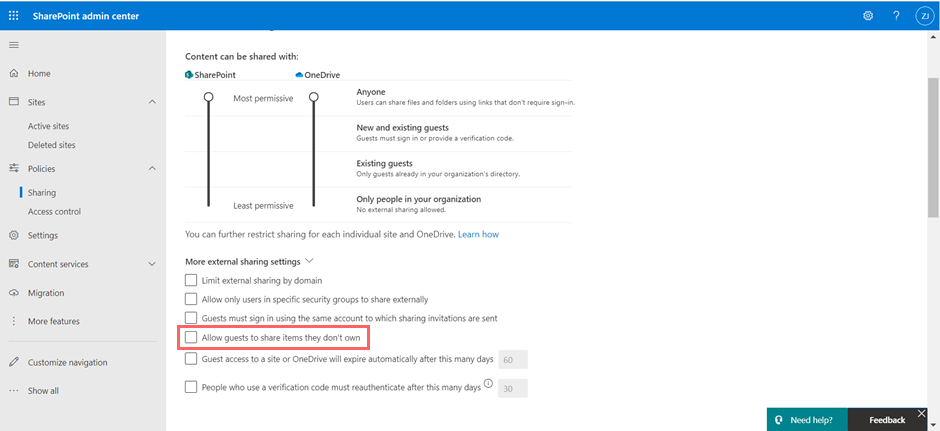
In practice, a guest will not be able to create a new sharing link if he has not been given explicitly the “Full Control” permission on the content or container.
On the screenshot below, we can see that he only has the right to share the content to people who already have access.
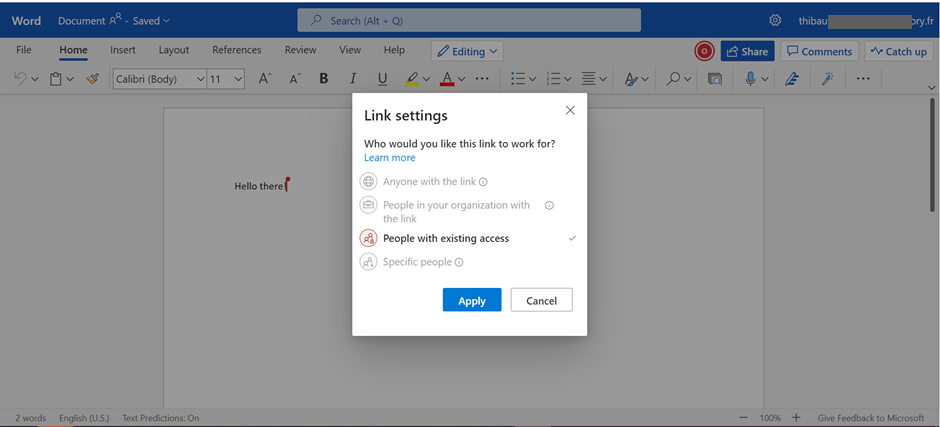
Prevent internal users to (re)share items from another user’s OneDrive
The next step is to define whether an internal user can (re)share content from another user. Several scenarios are possible:
- A user can decide to allow or not the sharing for his own OneDrive.
- An administrator can force a configuration for the whole organization.
- An administrator can change a configuration for a user.
Whare are the settings available ?
At the level of each OneDrive, two settings determine the conditions under which another user can access and (re)share content:
“Allow members to share the site and individual files and folders:
- If this box is checked (yes by default), a user who has Edit rights to content will be able to (re)share it.
- If this box is unchecked, only the owner will be able to create share links for the data on their OneDrive.
“Allow access requests”:
- If this box is checked (yes by default), a user who has Read rights will be able to suggest to the owner to grant permissions to a third person. A user who does not have access rights can request the access to the owner (or to the person indicated)
- If this box is not checked, a user who does not have access will simply see an error message telling him that he does not have access.
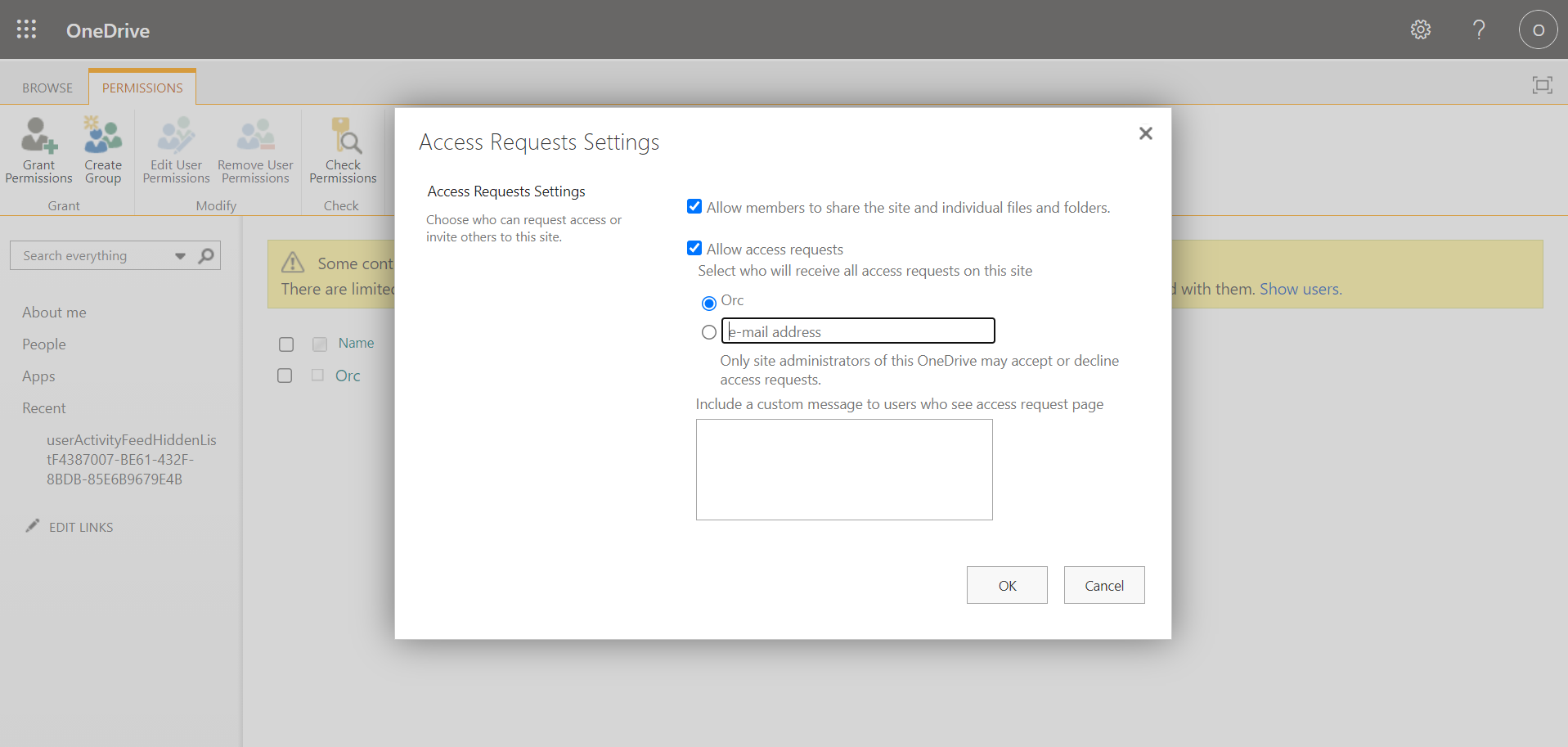
These settings are available in the old OneDrive settings: “OneDrive settings > More Settings > Return to old Site settings Pages > Site permissions > Access Request level settings”.
By default, each owner can change the values which are very permissive.
What possibilities for administrators?
Unlike SharePoint sites, it is possible to block (re)sharing at the tenant level for all OneDrive by non-owners.
For both settings shown above, a Global Administrator or SharePoint Administrator can force a value:
- “On”: Enabled for all OneDrive. A user cannot override the set value.
- “Off”: Disabled for all OneDrive. A user cannot override the set value.
- “Unassigned”: The value is left to the user’s hand.
This configuration is done with the PowerShell cmdlet:
# Authorize users to share items from another user's OneDrive (FOR ALL ONEDRIVE)
Set-SPOTenant -ODBMembersCanShare Off #On, Off, Unspecified
# Authorize users to request access or sharing to another user's OneDrive (FOR ALL ONEDRIVE)
Set-SPOTenant -ODBAccessRequests Off #On, Off, Unspecified
If an administrator selects “On” or “Off”, a message in red will appear stating that the setting is managed at the organization level. The box will be grayed out.
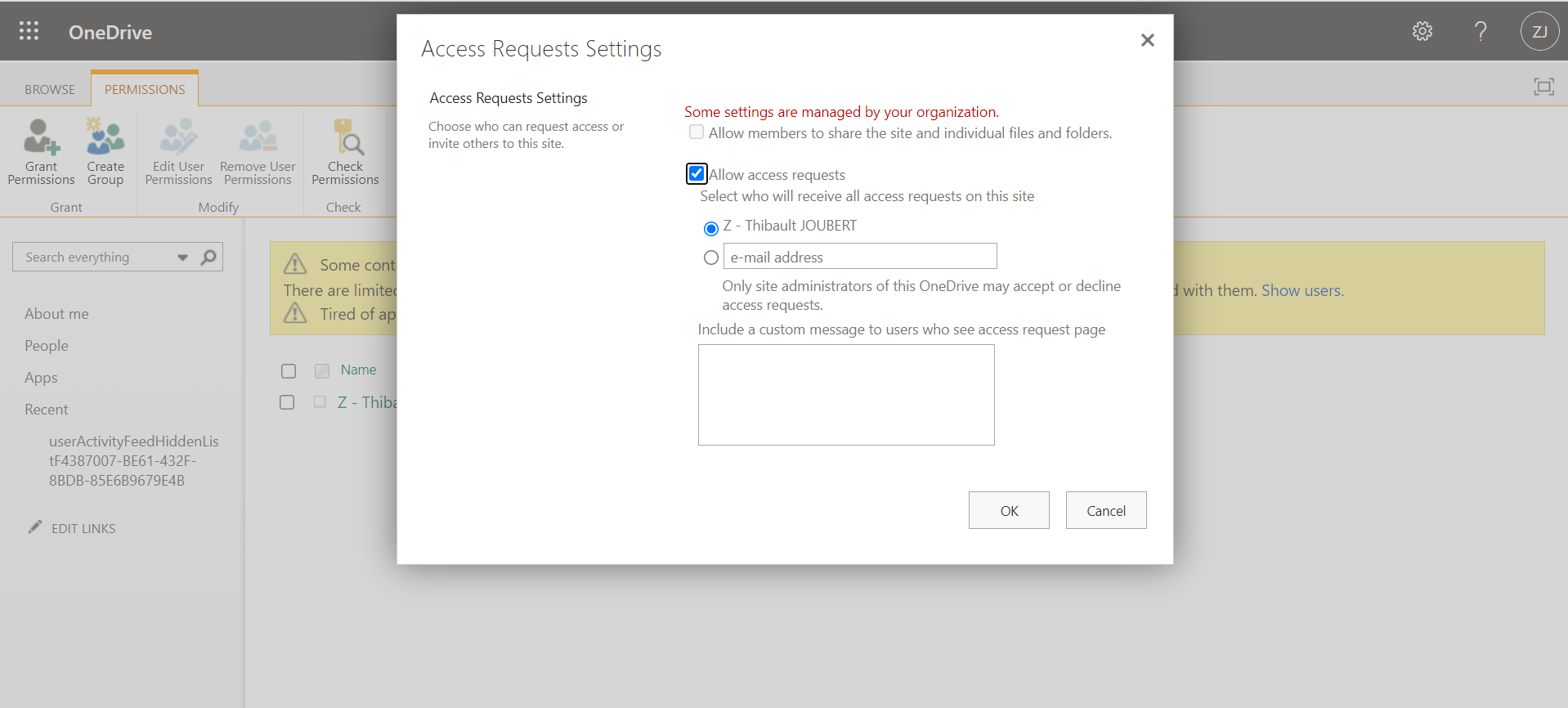
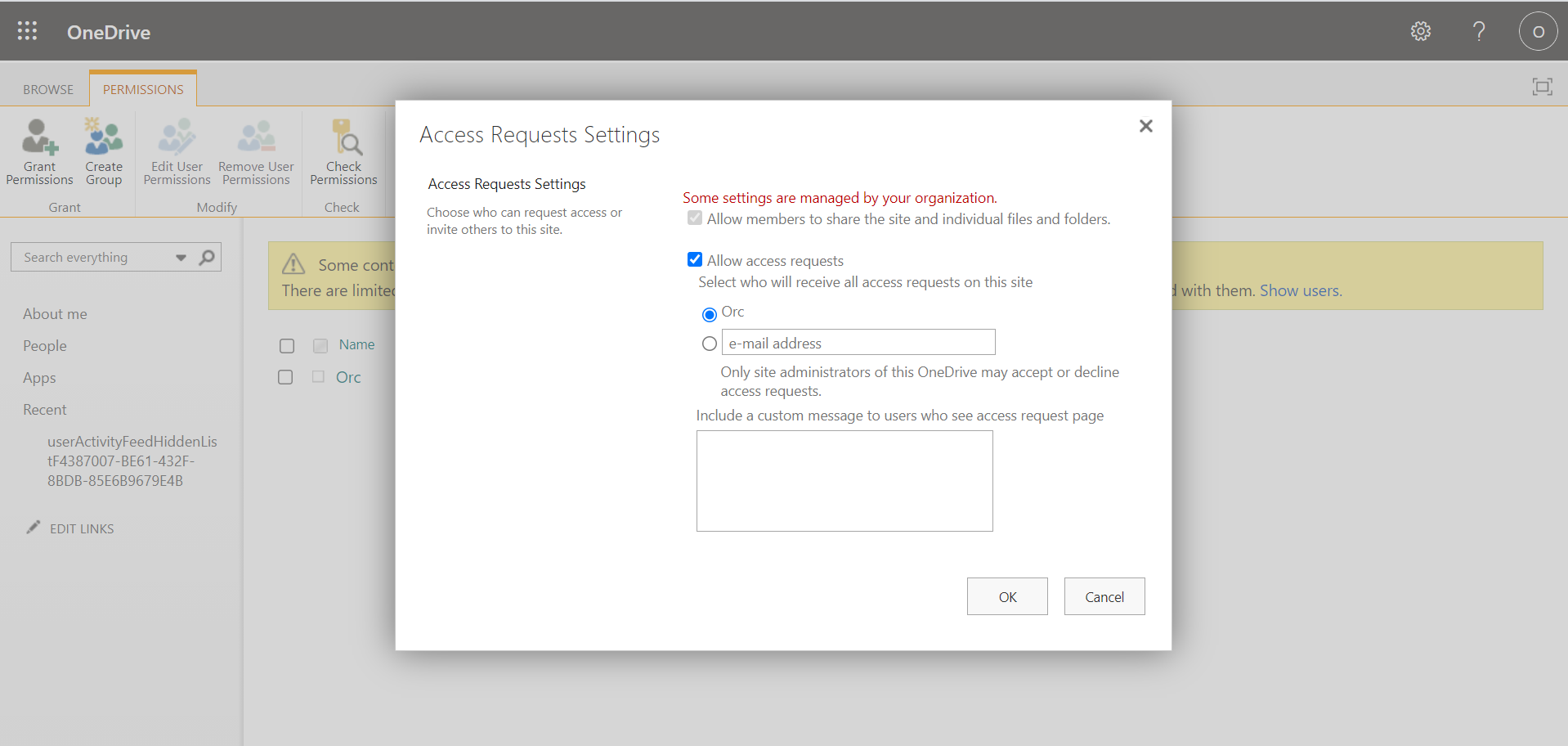
In case the values are left at “Unspecified” an admin can disable (re)sharing and access requests for a specific OneDrive via the cmdlet PowerShell:
Set-SPOSite -Identity siteurl -DisableSharingforNonOwners
Note that an administrator will not be able to change the value of (re)sharing or access requests if they are configured at the organization level:

After applying this command, we can see that both parameters have been disabled:
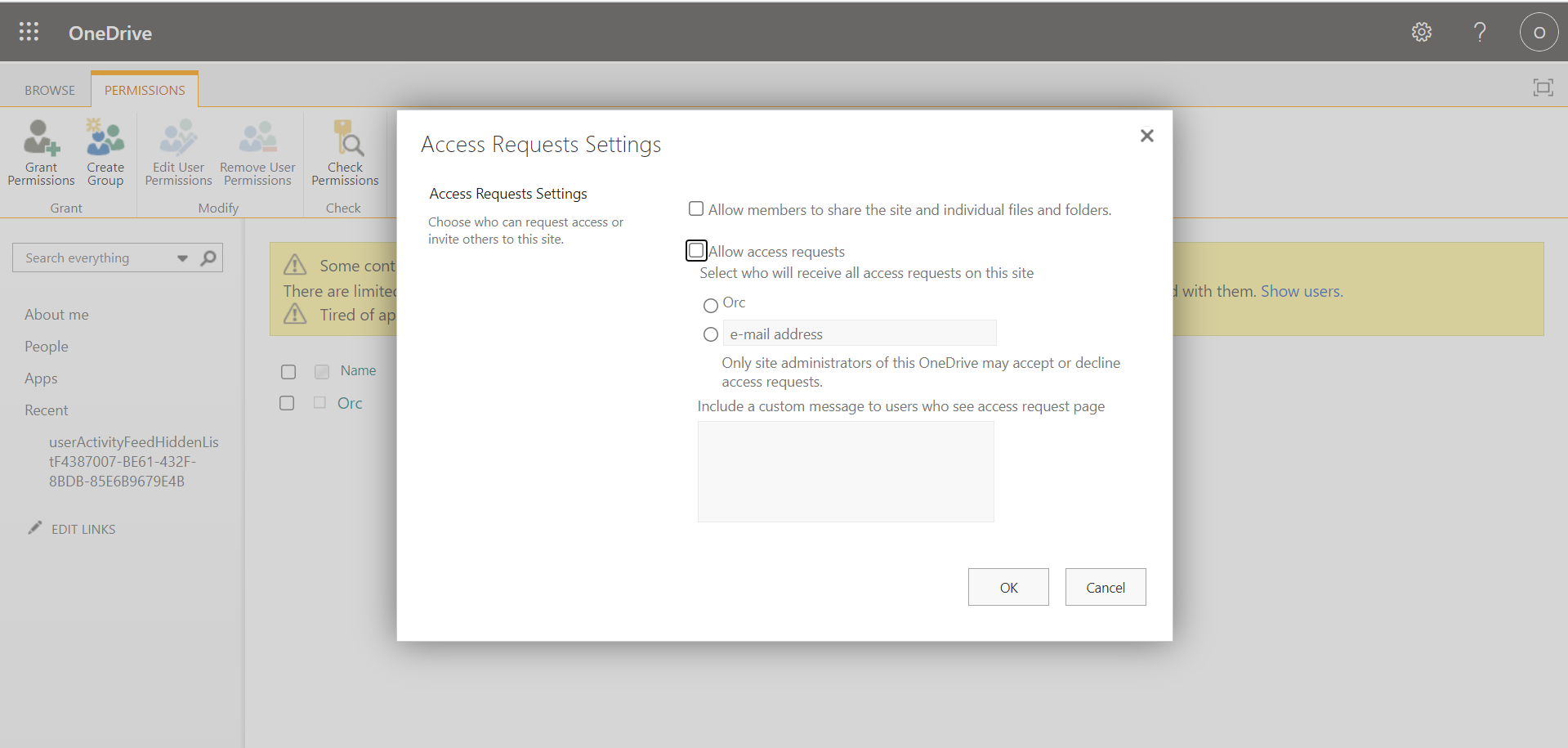
A user can then modify these values.
Two scenarios can be considered to improve the security posture:
- Block (re)sharing for all users but leave access requests available.
- Disable (re)sharing for all users but let users change their settings if they want to.
How to track if values are changed for a OneDrive?
In case one of the values is modified by a user or an administrator, a log is generated:
- Modified ‘Members Can Share’ setting
- DisableSharingForNonOwners
- Modified access request setting
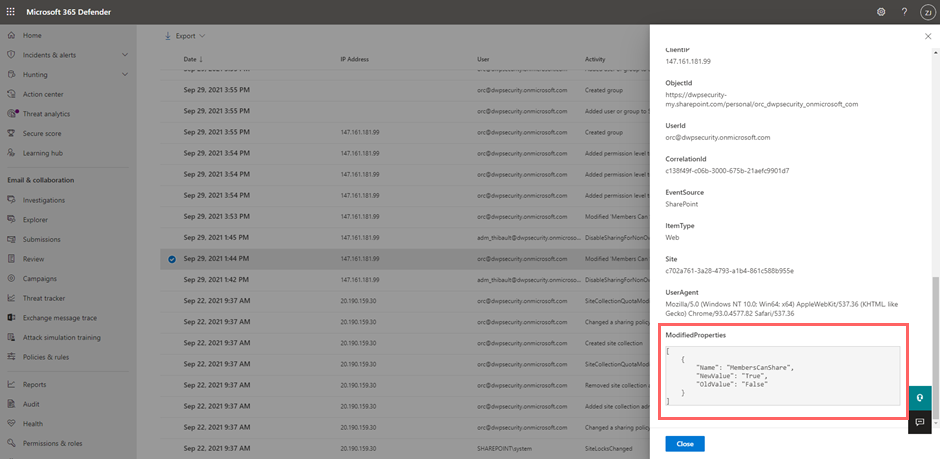
Note that, as for SharePoint sites, it is not possible de get the status of access requests and (re)sharing through Graph API or PowerShell.
To conclude
We have seen in this blog post how to prevent users from creating endless and uncontrolled sharing chains in OneDrive.
It is essential to take a stand at the organizational level and to make users aware of these two parameters (sharing and request access) in order to help them control their personal space